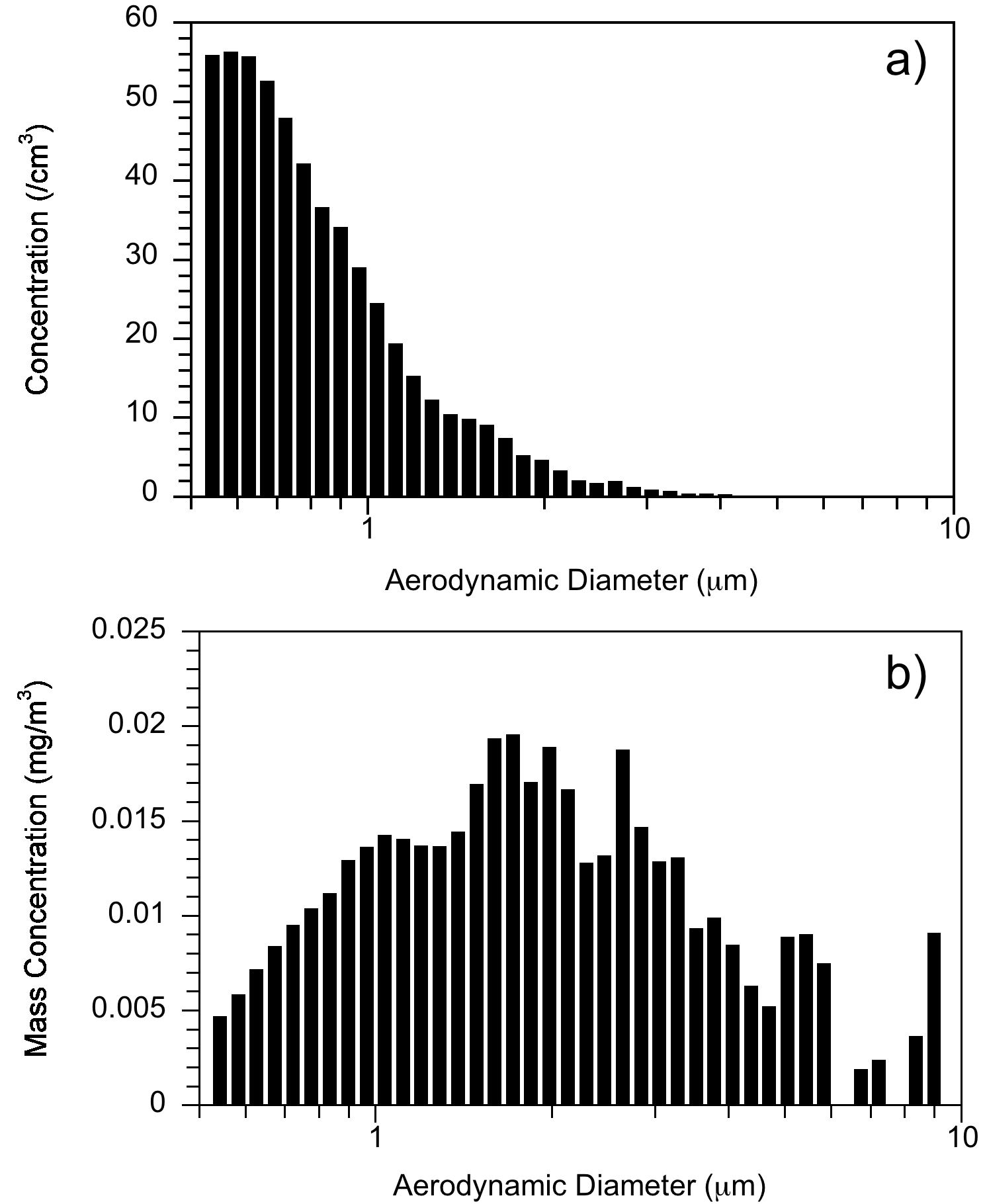S.N. Jackson, J.-K. Kim, J.L. Laboy, K.K. Murray, Particle formation by infrared laser ablation of glycerol: implications for ion formation, Rapid Commun. Mass Spectrom. 20 (2006) 1299–1304. doi:10.1002/rcm.2443.
Abstract

The quantity and size distribution of micrometer-sized particles ejected from thin films of glycerol were measured using light scattering particle sizing. Thin glycerol films were irradiated at atmospheric pressure with an infrared optical parametric oscillator at wavelengths between 2.95 and 3.1 µm. Particulate material resulting from the ablation was sampled directly into a particle-sizing instrument and particles with diameters greater than 500 nm were detected and sized by light scattering. The fluence threshold for particle formation was between 2000 and 3000 J/m2 for all laser wavelengths. At threshold, fewer than 100 particles/cm3 were detected and this value increased to several thousand particles/cm3 at twice the threshold fluence. The average size of the coarse particles ranged from 900 nm to 1.6 µm at threshold and decreased by 10-20% at twice the threshold fluence. The coarse particle formation observations were compared with ion formation behavior in matrix-assisted laser desorption ionization and interpreted in terms of a photomechanical mechanism for material ablation and ion formation.


